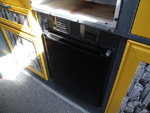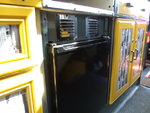Marcl
Full Member
- Posts
- 4
- Likes
- 1
So I bought this T4 Reimo conversion (converted by Ava Leisure apparently) a year ago.
It has a 3 way Electrolux RM4200S.
On 12v it was doing nothing when driving. I since found out the ignition line feeding the relay to close the circuit was dud, so fitted a new wire and the relay closes now and the fridge is a "bit cold" on 12V after a 4 hour drive.
On hookup it's a little bit colder, but not by a huge amount. There is never any noise. It's almost impossible to know if it's on.
I haven't tried the gas for long periods to know if it's any better.
Is this normal? Do I have unrealistic expectations?
How easy are these things to service, is it likely I need to clean something up. Replace something?
I asked a conversion place locally if they would look at it and they just replied with "it might be in the way out". Not helpful.
It has a 3 way Electrolux RM4200S.
On 12v it was doing nothing when driving. I since found out the ignition line feeding the relay to close the circuit was dud, so fitted a new wire and the relay closes now and the fridge is a "bit cold" on 12V after a 4 hour drive.
On hookup it's a little bit colder, but not by a huge amount. There is never any noise. It's almost impossible to know if it's on.
I haven't tried the gas for long periods to know if it's any better.
Is this normal? Do I have unrealistic expectations?
How easy are these things to service, is it likely I need to clean something up. Replace something?
I asked a conversion place locally if they would look at it and they just replied with "it might be in the way out". Not helpful.


